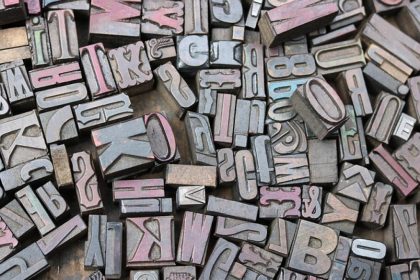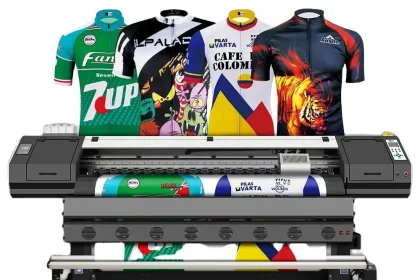Ever walked past a stunning sign and wondered how it was made? Custom sign making is an art filled with creativity, precision, and a dash of marketing magic. It’s not just about crafting a sign; it’s about making a statement that sticks.
Successful sign making starts with a clear vision. Whether it’s for a bustling storefront or an intimate café, understanding the purpose and audience of the sign is crucial. This forms the foundation upon which all design decisions rest.
Next up is the design process. Here, the power of colors, fonts, and materials come into play. Each element is carefully selected to convey the right message and evoke the desired emotions. Think of it as visual storytelling.
Material choice is more than just aesthetics. Durability, weather resistance, and versatility all matter, depending on where the sign will be used. Picking the right material ensures that your sign looks great for years to come.
Finally, attention to detail during installation can make or break the project. Proper placement, lighting, and finishing touches bring the vision to life, creating an eye-catching masterpiece that captures attention and communicates clearly.
Ready to dive into the secrets? Let’s explore what makes custom sign making so satisfying and successful.
What Are the Essentials of Custom Sign Design?
Creating a compelling custom sign involves a blend of creativity and strategy. Let’s break down the essentials that turn ideas into impactful visual statements.
Clarity and Simplicity
A good sign communicates its message quickly and clearly. Avoid overcrowding it with too much text or intricate graphics. Stick to a clean and simple design that’s easy to read even at a glance.
Color Harmony
Colors play a significant role in grabbing attention and evoking emotions. Choose a color scheme that aligns with your brand and ensures readability. High-contrast color combinations can make your sign stand out and be more legible from a distance.
Font Choice
Typography should not be an afterthought. Pick fonts that are both attractive and readable. Avoid overly decorative fonts for large chunks of text. Instead, use them sparingly for highlights or branding.
Material Selection
The material of your sign should match its environment. Indoor signs can be more delicate, while outdoor signs need to withstand weather elements. Options range from wood and metal to acrylic and vinyl, each offering different textures and durability.
Layout and Balance
The arrangement of text and images should be balanced and aesthetically pleasing. Centered layouts work well for formal designs, while asymmetrical layouts can create a more dynamic and modern feel.
Remember, each element of a custom sign should work harmoniously to convey your message effectively. Pay attention to these essentials, and you’ll be on your way to creating eye-catching and memorable signs.

How to Choose the Right Materials for Your Custom Signs?
Selecting the right materials for your custom sign is a critical step in ensuring its effectiveness and longevity. Here’s how to make the best choice for your needs.
Consider Location
Think about where your sign will be placed. Outdoor signs need materials that can handle sun, rain, and wind without fading or corroding. Weather-resistant options like aluminum, stainless steel, and treated wood are great for external use.
Durability Matters
The longevity of your sign is crucial. If you’re looking for something long-lasting, metals and high-quality plastics are your best bet. For temporary signs, materials like cardboard or foam board might work just fine.
Visual Appeal
Different materials offer different aesthetic qualities. Acrylic provides a sleek, modern look, while wood offers a more rustic and warm feel. Choose a material that aligns with the visual identity of your brand or the atmosphere you wish to create.
Budget-Friendly Options
Your budget will also play a significant role in material selection. Vinyl and PVC are affordable and versatile options often used for banners and lightweight signs. On the other hand, metals and high-end composites might be pricier but offer premium looks and extended durability.
Maintenance
Consider the maintenance requirements of each material. Some materials, like metal and plastic, are easier to clean and maintain, while others, like wood, may require more care to keep them looking their best over time.
Choosing the right material for your custom sign involves a balance of aesthetics, durability, budget, and maintenance. By taking these factors into account, you can ensure your sign not only looks great but also stands the test of time.
Maximizing Impact: Design Tips for Effective Custom Signs
When it comes to custom signs, great design can make all the difference. To ensure your sign stands out and attracts attention, here are some key design tips.
First, keep it simple. A cluttered sign can be confusing and overwhelming. Aim for a clean design with minimal text and clear images or icons. The clearer the message, the easier it is for people to understand at a glance.
Use bold, readable fonts. Your audience should be able to read your sign quickly, even from a distance. Avoid overly fancy fonts that might be difficult to decipher. Stick to bold, sans-serif fonts for maximum readability.
Choose high-contrast colors. The right color combination can make your sign pop. Dark text on a light background or vice versa works best. Make sure the colors you choose are eye-catching but not jarring.
Include a strong call-to-action. Whether it’s “Call Now,” “Visit Us,” or “Learn More,” make sure your sign tells viewers exactly what you want them to do next. A clear and compelling call-to-action can drive more engagement.
Don’t overlook spacing. White space (or negative space) is your friend. It helps guide the viewer’s eye and makes the sign easier to read. Avoid cramming too much information into a small area.
Finally, make it visually appealing. Incorporate high-quality images or graphics that support your message. Ensure they are sharp and relevant to what you’re promoting. A well-designed visual can grab attention faster than text alone.
By following these design tips, you’ll create custom signs that are not only attractive but also effective in conveying your message and driving action.
Custom Sign Making Process Demystified: A Step-by-Step Guide
Creating a custom sign might seem like a daunting task, but it’s actually quite straightforward! Here’s a simplified, step-by-step guide to help you understand the process from start to finish.
First, determine your goals. What is the main purpose of your sign? Is it to attract new customers, provide information, or promote an event? Knowing this will guide every decision you make.
Next, brainstorm your design. Think about the colors, fonts, and overall style that best represents your message and brand. Sketch out a few ideas and refine them until you find something that feels right.
Choose the right materials. Depending on where your sign will be displayed (indoors, outdoors, etc.), you’ll need to select materials that can withstand weather conditions and will look good for a long time. Common materials include vinyl, metal, wood, and plastic.
Once you have a design and materials, it’s time for production. If you’re working with a professional sign maker, provide them with your final design and specifications. They’ll use specialized equipment to print or fabricate your sign according to your preferences.
After production, inspect your sign carefully. Look for any errors or imperfections and ensure everything is as it should be. This is your chance to make any necessary adjustments before the sign is installed.
Finally, install your sign. Placement is key—ensure it’s located where it will be most visible and effective. For added impact, consider lighting or other features that will make your sign stand out, especially at night.
And there you have it! With this step-by-step guide, the custom sign-making process doesn’t have to be a mystery. Following these steps will help you create a sign that’s not only beautiful but also perfectly suited to your needs.
Benefits of Investing in Professional Custom Signage
Investing in professional custom signage can do wonders for your business, elevating your brand and drawing in potential customers. Let’s dive into some key benefits of making this worthwhile investment.
First off, custom signage creates a strong first impression. Your sign is often the first thing people notice about your business. A well-designed, professional sign conveys a sense of quality and attention to detail, which can entice people to step inside and explore what you have to offer.
Enhanced visibility is another major perk. Whether you’re located on a busy street or a quiet corner, a well-placed custom sign ensures that people can find and recognize your business easily. This increased visibility can lead to higher foot traffic and potentially more sales.
Branding Consistency
Maintaining brand consistency is crucial, and custom signage helps achieve that. By using your unique colors, fonts, and logo, custom signs reinforce your brand identity. This consistent branding builds trust and loyalty among your customers, making them more likely to return.
Additionally, professional custom signage is durable and built to last. High-quality materials and craftsmanship mean your sign won’t fade, peel, or suffer from wear and tear quickly. This longevity saves you money in the long run because you won’t need to replace it as often.
Another benefit is the flexibility in design. Custom signage allows you to get creative and tailor your sign to perfectly fit your business’s personality and message. From sleek and modern to classic and traditional, the design possibilities are endless.
Competitive Edge
Finally, custom signage can give you a competitive edge. Standing out from the crowd is essential, especially in a busy market. A unique, eye-catching sign sets you apart from competitors and attracts more attention to your business.
The Bottom Line: Keys to Success in Custom Sign Making
When it comes to custom sign making, success comes down to a few key factors. First, quality is paramount. Using high-grade materials and professional craftsmanship ensures that your sign not only looks great but lasts a long time.
Secondly, design plays a crucial role. A well-thought-out design that incorporates your brand’s unique colors, fonts, and logo can make a huge difference. This consistency helps in building a strong and recognizable brand.
Additionally, think about placement and visibility. A fantastic sign won’t do much good if people can’t see it. Strategically placing your sign where it catches the most attention will maximize its effectiveness.
Don’t forget to keep your target audience in mind. Understanding who you are trying to attract can guide your design choices. Whether it’s a modern look for a tech crowd or a warm, welcoming vibe for a family-oriented business, tailoring your sign to your audience can bring better results.
Finally, consider working with professional signage experts. Their expertise can provide valuable insights and help you avoid common pitfalls. Plus, they can bring your vision to life in ways you might not have imagined.
In summary, focusing on quality, design, placement, audience, and professional input are the keys to making a successful custom sign. By keeping these elements in mind, you can create a sign that not only stands out but also drives traffic and strengthens your brand. Make your investment count, and watch how a great sign can positively impact your business.









